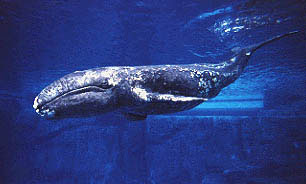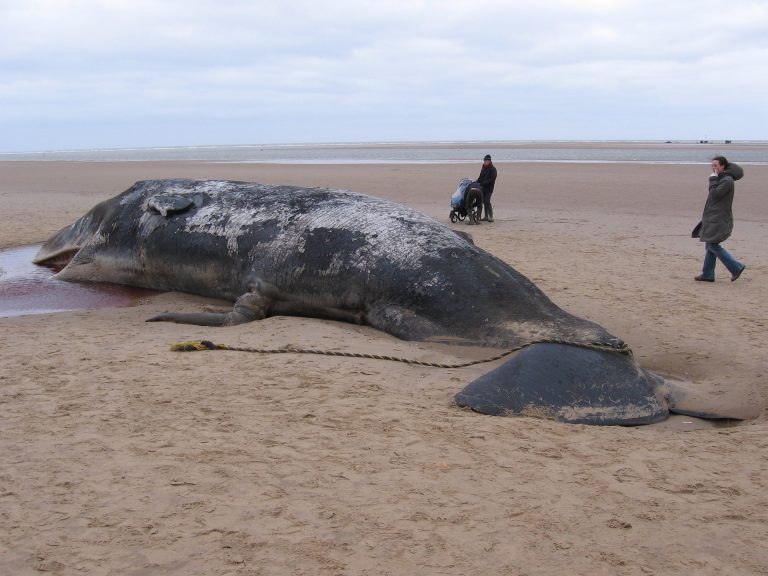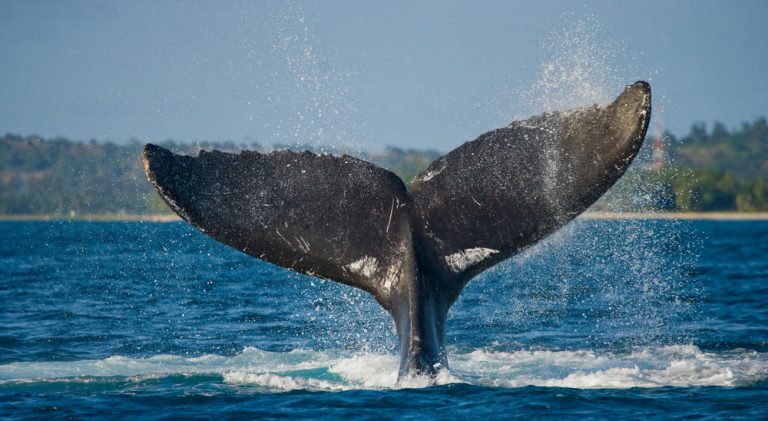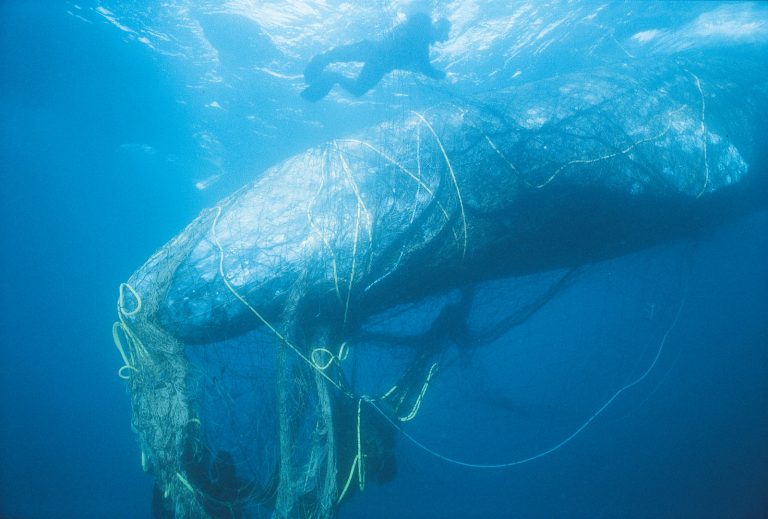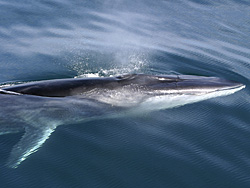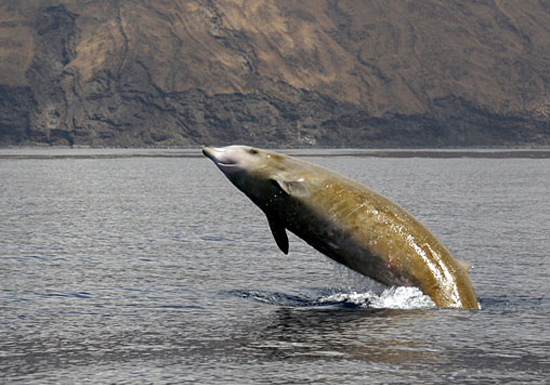15 Facts About Whales You Probably Did Not Know
Join us as we briefly explore the hidden world of these giants of the Oceans in our compilation of facts about whales.
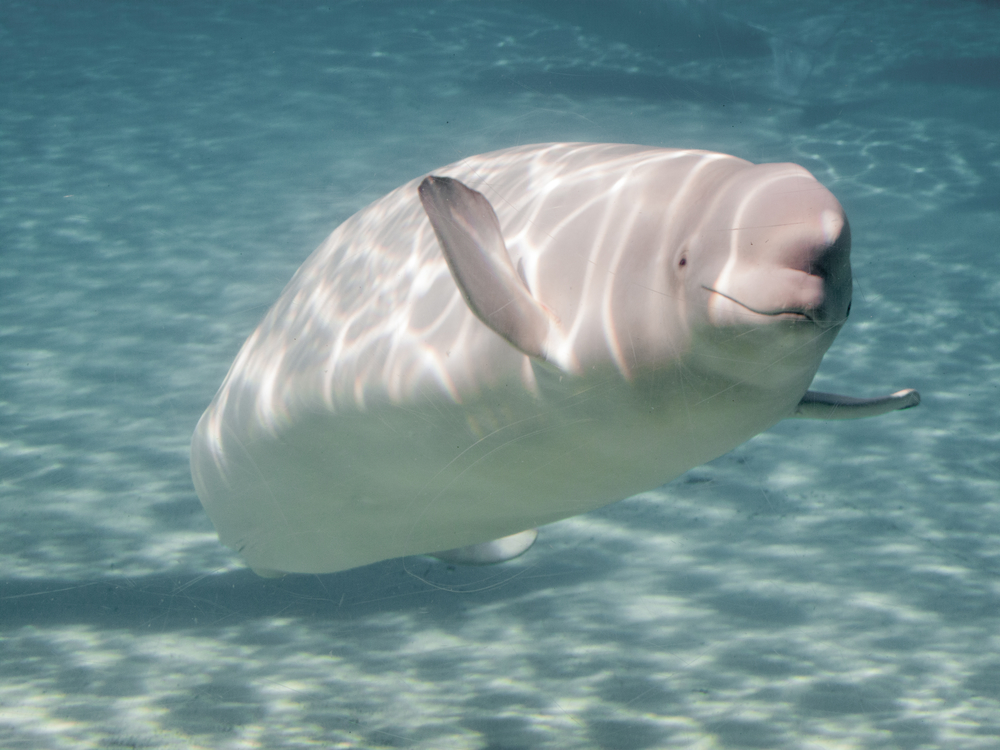
The gentle giants of the Oceans are some of the most mysterious and awe-inspiring creatures we share our world with.
Whales have been around for millions of years before we humans even showed up.
Some species like the blue whale are so large that they would have little trouble sinking a modern day oceangoing vessel. Yet with all their massive size, they go about their business with so much grace and without causing a fraction of the havoc that humans do!
From history, to culture, literature and even religion, whales keep popping up everywhere.
Nevertheless, there’s still a lot we are learning about them.
If you thought you knew everything about these majestic marine mammals, then check out the following 15 interesting but little-known facts about whales.
You’ll definitely go away amazed.
15 Facts About Whales
1) Blue whales are the largest creatures ever on this planet. Though most people would guess a dinosaur or some other animal was the largest thing that ever existed – ever, that title belongs to the blue whale.
Towering at over 30 meters (100 ft) and weighing up to 180 tons (400,000 lbs), the largest blue whale is comparable to a jumbo jet. In fact, its mouth can fit 100 people and its tongue weighs about the same as a large elephant.
2) Whales explode!
Well not with a loud bang and fire but the results are almost as dramatic. A whale explosion happens when a beached whale dies and its bloated body bursts open spilling guts, flesh and blood into the surroundings. Usually this occurs due to some external interference.
Whale explosions can be pretty graphic and they often turn into an environmental nightmare.
3) Some whale species got their common names through very grim circumstances. For instance, the story goes that the Right whale got its name from the fact that whalers hunted it excessively after they noticed its extremely high blubber content (whale oil). In addition, its slow, docile nature made it very easy to catch and kill.
Also, its body floats to the water surface once it dies, making it so much easier to harvest. Thus they named it the Right whale.
As a result of excessive hunting, the Right whale is the rarest and most endangered of whales today. There are just a few hundred of them alive today.
4) Orca whales are not whales, they are actually dolphins. They are the most intelligent, persistent, and fearsome predators in the oceans today. Even sharks cannot withstand them.
5) The Southern Right whale is not the largest whale, but interestingly it owns the heaviest testes on Earth. A pair of their testes weighs approximately one ton.
6) Beluga whales are known to produce almost human sounds.
There are instances of beluga whales mimicking human sounds to the extent that people hearing it would think they were listening to little children talking or humans conversing.
Two captive beluga whales, NOC and Lugosi, at different times and places could pull off this feat. In fact, observers said that Lugosi could say its own name.
7) The elusive Cuvier’s beaked whale is the deepest diver among whales. It can go as deep as 3,000 meters (10,000 feet). It’s followed closely by the sperm whale at 2,250 meters (7,382 feet).
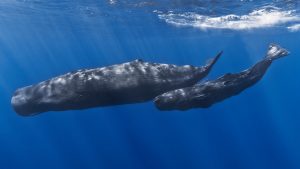
8) The most famous whale in literature, Moby Dick, was a real whale. A sperm whale.
The 1851 classic tale “Moby Dick” by Herman Melville was based on the actions of a sperm whale named Mocha Dick. This albino whale sunk a whaling ship, the Essex, in November 1820 after ramming it.
The survivors of the Essex resorted to cannibalism and drew lots daily to select one sailor out of their group for eating.
9) For such a large animal, the Fin Whale moves remarkably fast. This whale swims at speeds of up to 25 miles an hour (40 km/h) earning it the nickname the ‘greyhound of the sea.’
At the peak of the whaling industry, some particular species of whales were hunted for their meat and blubber to the extent that they almost went extinct!
10) Sperm whales are very loud! In fact, these whales produce sounds that are up to 230 decibels. A jet is about 140 decibels loud.
11) The hippopotamus is the closest living relative to whales and dolphins. Weird right?

12) The male narwhal has what appears to be a tusk or horn growing out of its lip. This horn is really a canine tooth that grows throughout the whale’s lifetime to the extent that it pierces through the animal’s left lip.
These horns can grow up to 10 feet long and people once though they belonged to unicorns.
13) Beluga whales love music and they are known to join in synchronized dancing.
14) Sperm whales sleep in a vertical position. In 2013, a group of scientists trailing a group of tagged whales met them off of the coast of Chile motionless with their bodies vertical to the water surface and just their heads bobbing out.
The whales remained motionless until the scientists touched one of them at which point the whole group came to life and immediately swam off.
It turns out they were sleeping. In addition, it appears they will only sleep from 6:00 PM in the evening till exactly midnight for some unknown reason.
15) Right whales have one of the lowest reproduction rates among whales. Females of this species give birth only once every 5 years. Also, only about half of those calves survive till adulthood. .
The answers to the Whale True or False Trivia Game
1. False. Pod means family and gray whales are solitary animals. There are times that you see them close together. During migration, 22,000 whales are passing by and sheer numbers will put them close together. During summer feeding, when the food is plentiful, they will feed in the same areas. And when feeling romantic, there may be multiple whales vying for a female’s attention.
2. False. Whale’s lungs are connected to their nose (blowhole) but not their mouth. They cannot blow water out of their blow hole. Some whales start to exhale before they reach the surface, blowing through the water and causing a visible water spray. Gray whale’s lungs are the size of two chest freezers, and they empty them in a fraction of a second, causing visible condensation (like our breath in the winter).
3. False. We see whales every month of the year along the Oregon coast. We have about 22,000 gray whales during winter and spring migrations, plus a group of 200-400 whales that feed along the Oregon and Washington coasts during the summer and fall.
4. False. There is an urban legend of resident whales in Oregon waters, but all the whales along our coast migrate. The migration is to find warm calm waters for giving birth. Babies are born without the insulating blubber layer, and if born in our cold waters they will die from hypothermia. Here in Depoe Bay we have what is known as summer resident whales. These same whales return year after year to feed in and around the kelp beds.
5. False. The gray whale’s real name is “Eastern Pacific gray whale”. We do not usually use the “Eastern” and refer to them as Pacific gray whales. There is one other small group (130 whales) along the Russian coast.
6. False. A gray whale’s throat is only the size of a grapefruit, obviously limiting what it can swallow. Their usual food is amphipods and are found in the mud on the sea floor, or mysid shrimp that are found in the water column in rocky areas. Both are no bigger than mosquitoes and they eat a ton a day. Gray whales are opportunistic feeders and have been known to eat crab larva and small fish.
7. False. Orcas common name of “killer whale” is really “killer of whales”. We got lazy and quit saying the “of’ and turned them into whale. Orcas were given their name because they kill whales. Orcas are technically the largest dolphins.
8. True. The transient Orca’s (killer whale’s) favorite food is baby whales as the adults are too big for them. If they cannot get a baby whale, they will hunt sea lions and seals. There is a different type of orca in Puget Sound called residents, and they are fish eaters.
9. False. There are about 1,100 humpback whales that migrate past Oregon with the grays at about the same time. There are also humpbacks that feed along the coast, but their food is found 8 miles or more offshore. Occasionally currents will push their food close to shore, and we will get to see them feeding. They are often seen by fishing boats, but not usually from shore locations.
10. False. The gray whale is in the sub-order Mysticeti; they have a baleen instead of teeth.

